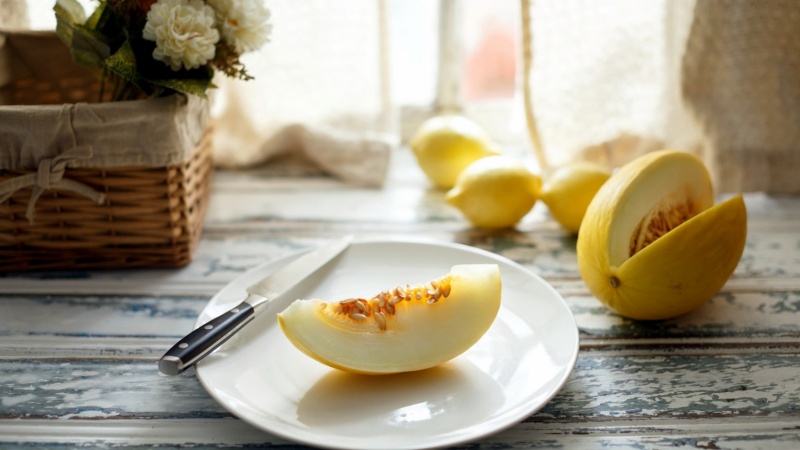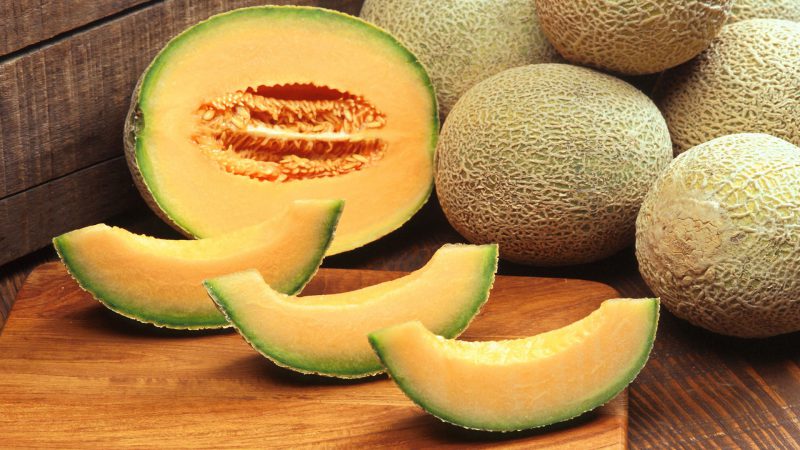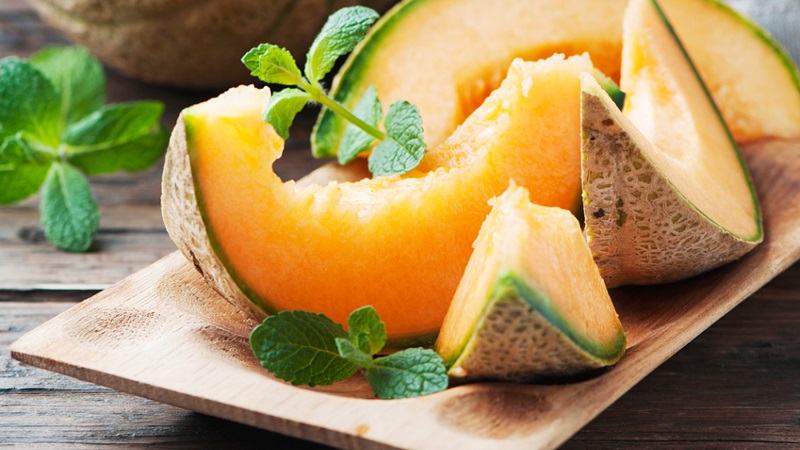Is it possible to breastfeed a melon, how to choose it correctly and how much to eat
The main question for a pregnant and lactating mother is: what can you eat while breastfeeding, and what is better to refuse? The opinions of pediatricians differ, which further confuses nursing mothers. Can melon be eaten during lactation? And if so, what are its benefits, norms of use and rules for introducing into the diet - our article is devoted to the answers to these questions.
The content of the article
Can melon be breastfed?
Young mothers often make a typical mistake - they limit or completely exclude certain foods from the diet, fearing to harm the child. My friend and mother say one thing, the pediatrician another, they write the third on the forums. It is easy to get lost in this, but making the right decision is much more difficult.
During lactation, you give your baby a variety of nutrients, including protein, vitamins, sugar, phosphorus, and calcium. During this period, your body has a huge need for vitamins, minerals and protein. Eating one buckwheat, boiled chicken and carrots will lead to a lack of components in the body and is fraught with cessation of lactation. You can even lose your hair and teeth. Not to mention being monotonous diet quickly gets bored.
Attention! The World Health Organization says that you can eat most of the foods you are used to if your toddler is not allergic and has normal digestive system sensitivity. WHO not only does not prohibit the introduction of melons into the diet, but even insists on melon. Indeed, its fragrant and juicy pulp contains a huge amount of nutrients and nutrients that have a beneficial effect on the health of a nursing mother.

Admissibility of use depending on the age of the baby
During breastfeeding, the baby's body gets acquainted with the biochemical composition of the products. And the more varied the mother's diet, the less likely it is to develop allergic reactions in the future.
Pediatricians recommend introducing the melon into the mother's diet gradually starting from the age of three months. baby. By this time, his digestive system will get stronger, the likelihood of a negative reaction will decrease.
In the future, you can increase the amount of the product to a comfortable norm for mom and baby. Melon can be given to children from the age of two.
Read also if you can eat melon on an empty stomach.
Melon benefits for a nursing mother and baby
Sweet pulp contains:
- silicon, iron, zinc, cobalt, manganese, copper;
- sodium, chlorine, sulfur, calcium, potassium;
- vitamins A, B, C, E, PP, beta-carotene;
- enzymes that improve digestion;
- monosaccharides;
- fiber;
- organic and fatty acids.
Eating melon during lactation increases milk flow, since it contains 90% water, prevents the deposition of salts in the kidneys, and removes toxins.
Iron and vitamin C normalize the processes of hematopoiesis, increases the level of hemoglobin. Beta-carotene stimulates the immune system, reduces the risk of cancer. Vitamin C relieves inflammation, tones the skin.
High serotonin levels improve the mood of mom and baby. Vitamin B8 of youth and growth prevents the development of atherosclerosis, removes cholesterol, regulates the functioning of spinal cord cells, increases the sensitivity of nerve fibers. A pleasant bonus that every woman will appreciate is increased hair growth.
Fiber and enzymes improve the digestive tract, increase the number of lactic acid bacteria, normalize weight and remove excess fluid.
When breastfed melon is consumed, folic acid deficiency is replenished, which is responsible for the correct development of the child's immune, circulatory and nervous systems.
Zinc and silicon have an antioxidant effect, promote skin regeneration, stimulate the production of elastin and collagen. After childbirth, the skin quickly regains firmness and elasticity.
Magnesium is responsible for the work of the cardiovascular and muscular systems, normalizes sleep, and relieves cramps.

Contraindications
Direct contraindications for the use of melons during lactation include:
- allergic manifestations in mother and child;
- stomach and duodenal ulcer, gastritis, pancreatitis (in mom);
- urolithiasis disease.
In diabetes, the consumption of melon should be limited, but not completely excluded, since it contains fructose, which is not contraindicated for diabetics. It is undesirable to eat a melon after the main meal; it cannot be combined with milk and soda.
Usage rates
With regard to melon, it is worth remembering the rules of separate nutrition and eating it fresh in small pieces as a separate dish. During lactation, it is recommended to consume no more than 300 g per week and focus on your own feelings and the baby's condition. If there are no obvious problems, the rate is increased gradually.
How to properly introduce melon into your diet
Melon pulp is classified as a food that can cause an allergic reaction. Therefore, pediatricians recommend following certain rules when introducing melon into the diet of a nursing mother.
Included in the menu from the third month of lactation. The first portion is no more than 50-100 g. This is enough for the baby's body to become familiar with the biochemical composition of the fetus.
This is interesting: which is more useful - melon or watermelon?
Before eating a bite, make sure that the child is healthy and not worried about anything. Do this in the morning, if the baby is naughty during the day, it will be easier to identify the cause of the anxiety. If there is no allergy or intestinal colic, you can eat another small portion the next day.
If you experience a negative reaction to a new product, exclude the product for two weeks. If symptoms recur this time, skip melon for 1-2 months.
Important! When introducing melon into your diet, try not to experiment with other new foods.

Rules for choosing a quality melon
Eat fresh cantaloupe only in the high season, and marshmallow, candied fruit and compote in winter. Early fetuses are oversaturated with nitrates, which penetrate the child's body through the mother's milk, causing intoxication.
To protect yourself and your baby, take on board a few rules for choosing a quality product:
- Don't buy melon cut into pieces. Bacteria quickly enter the pulp.
- The fruit should be free from damage and dark spots. Green blotches on the peel indicate that the melon is not ripe or is full of nitrates.
- Smell, the fruit should give off the sweetest honey or vanilla aroma.
- Press your fingers on the surface of the melon, if there are dents - do not buy. She's overripe.
- Click your fingers on the surface, if the sound is dull - feel free to take it.
- The peel color of a quality product ranges from light yellow to deep orange.
- A ripe melon has a dry tail and a soft nose.
- Refuse to buy melon on the roadside. The fruit quickly absorbs car fumes and other harmful substances. Get poisoned. Better to buy it in markets or supermarkets.

Conclusion
Breastfeeding is an important and crucial period in the life of a mother and child. Of course, the choice of food should be approached from the point of view of safety and health benefits for the body.
Given that melon is not included in the list of foods prohibited during lactation, according to WHO guidelines, do not refuse to eat it just because your friends did it. Follow the recommendations of pediatricians, introduce the product into the menu gradually, observe the baby's reaction and enjoy the healthy fruit without fear.